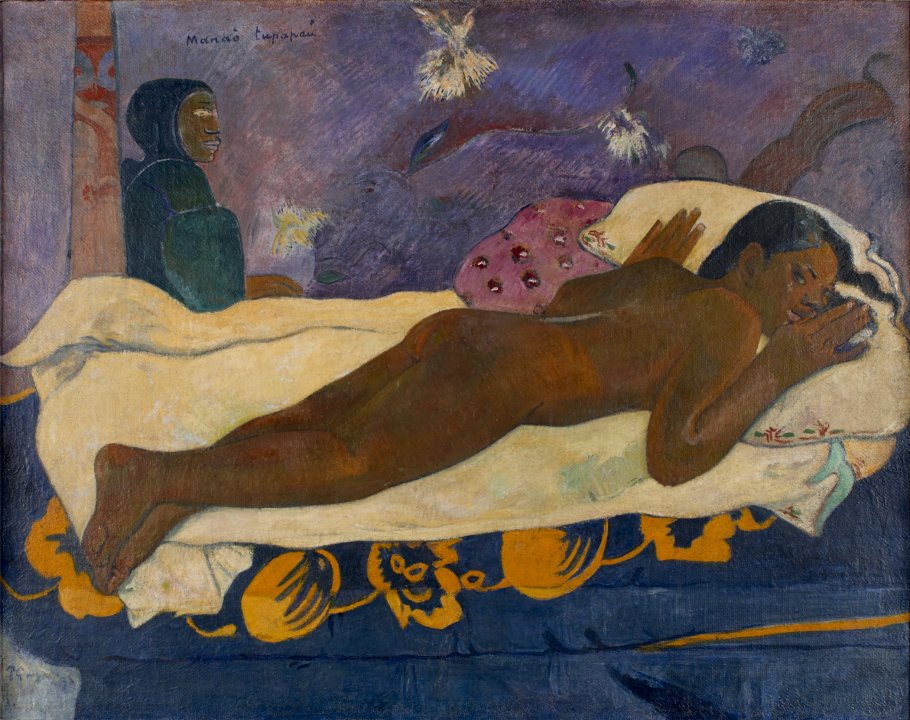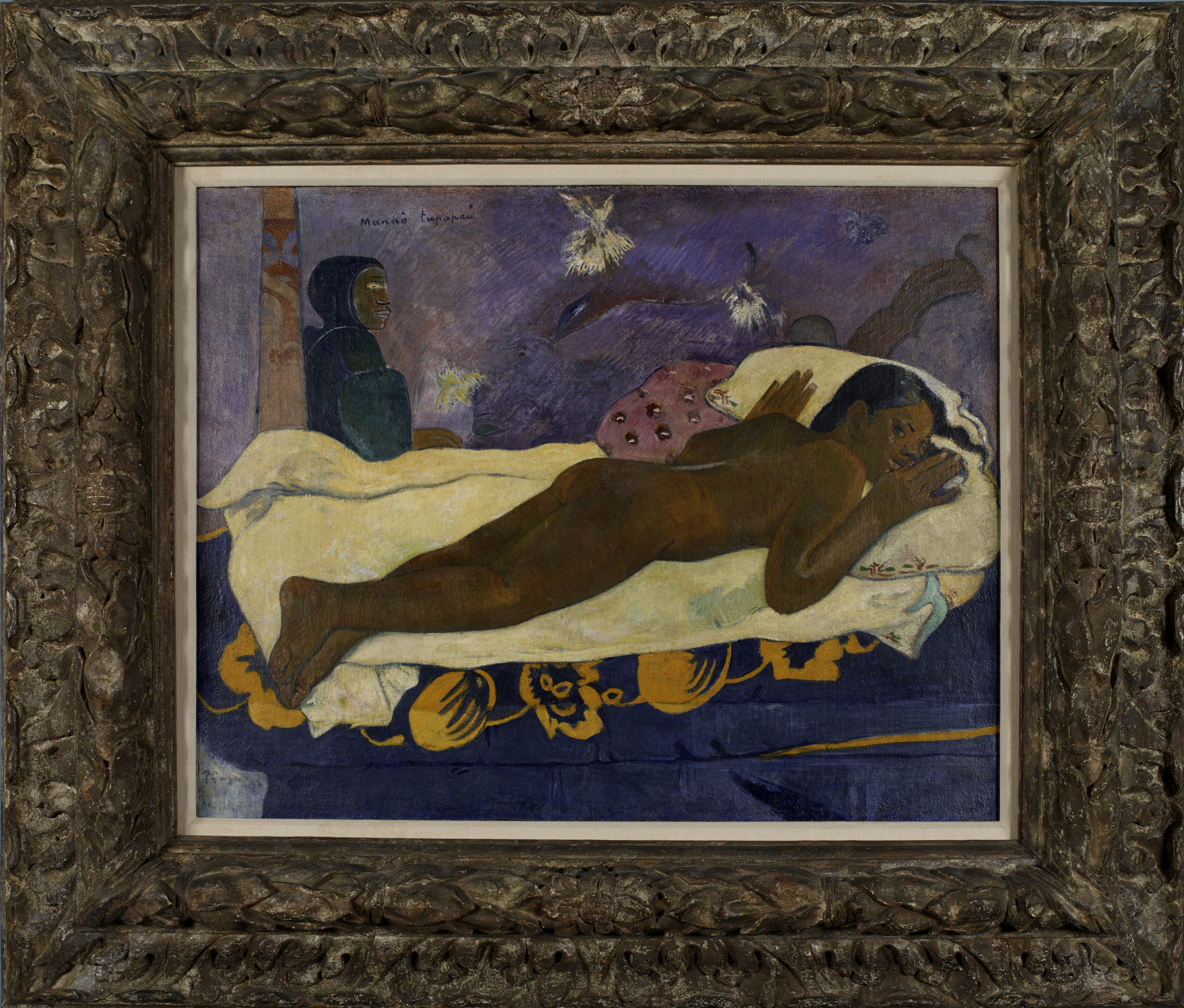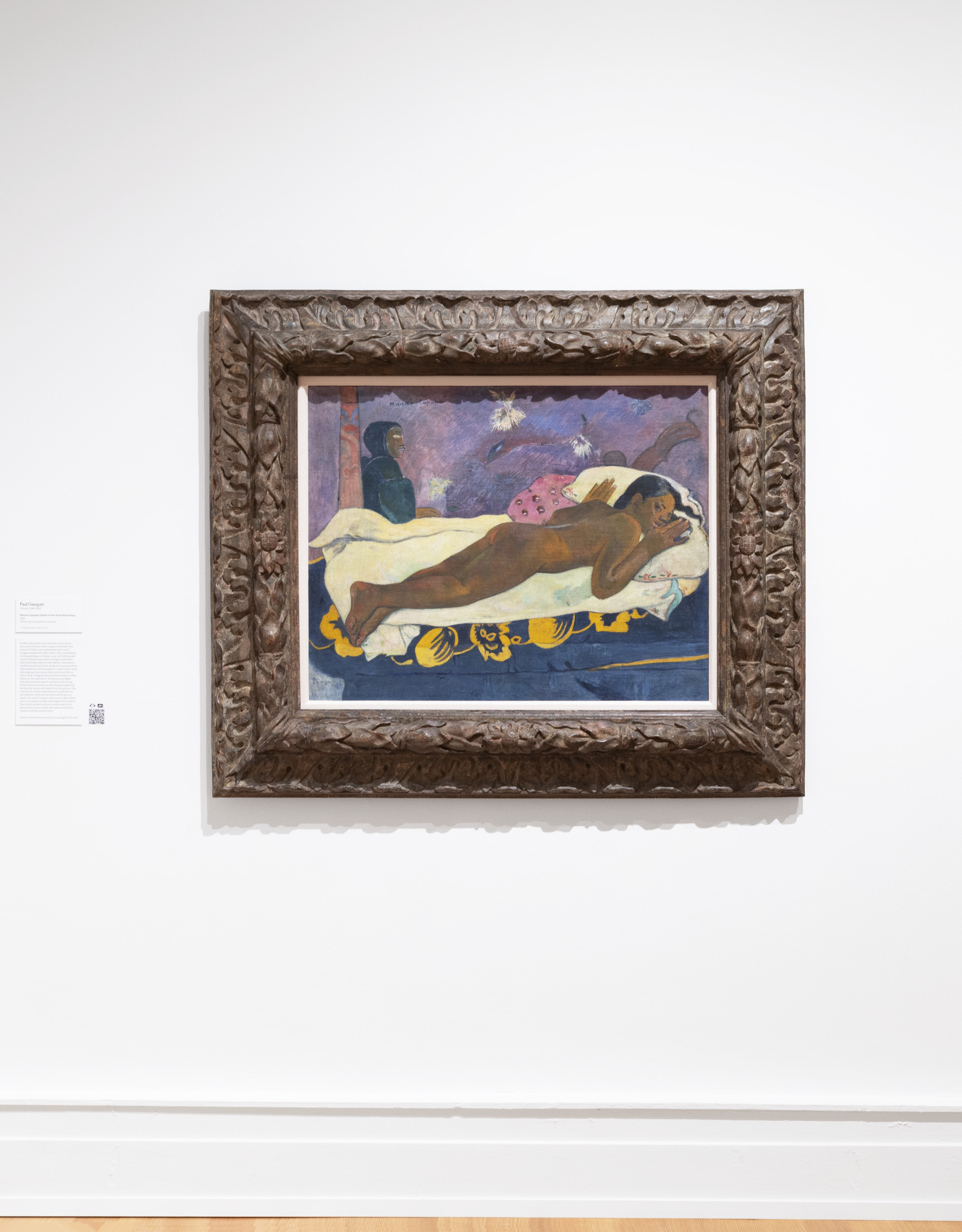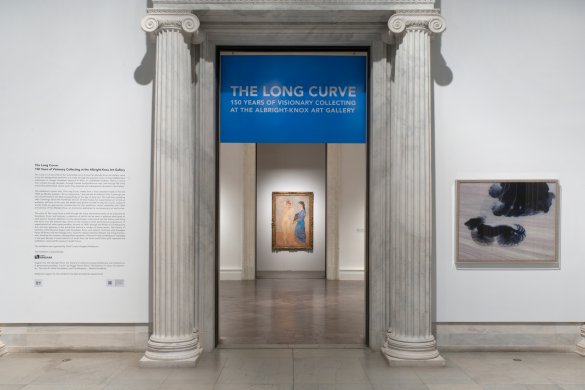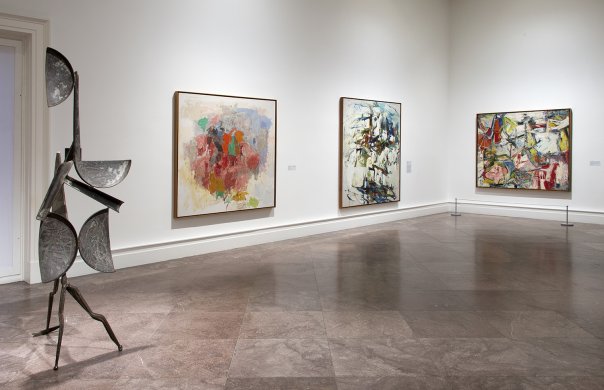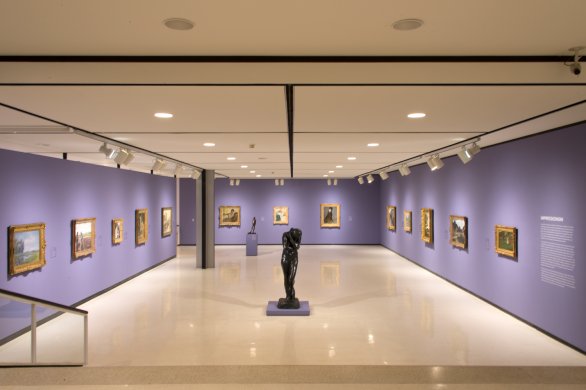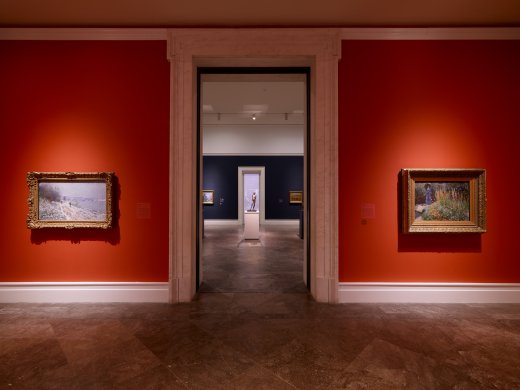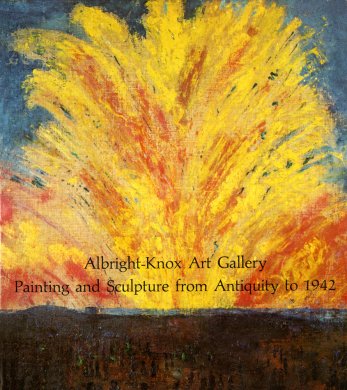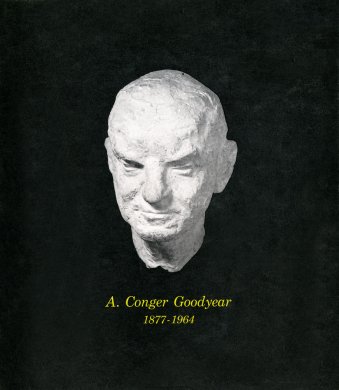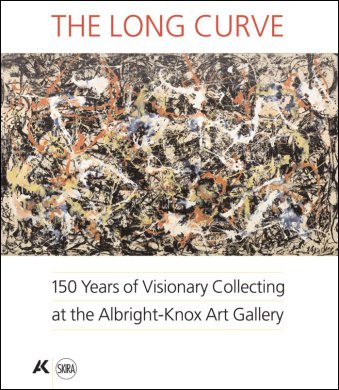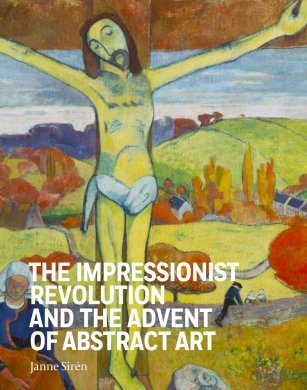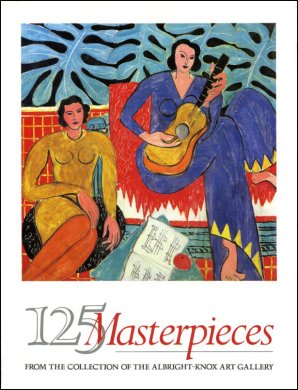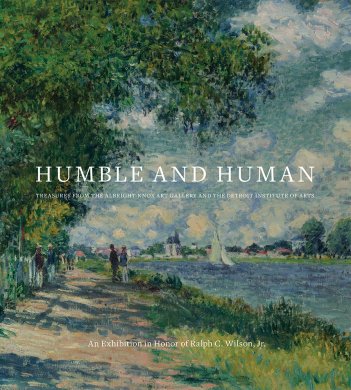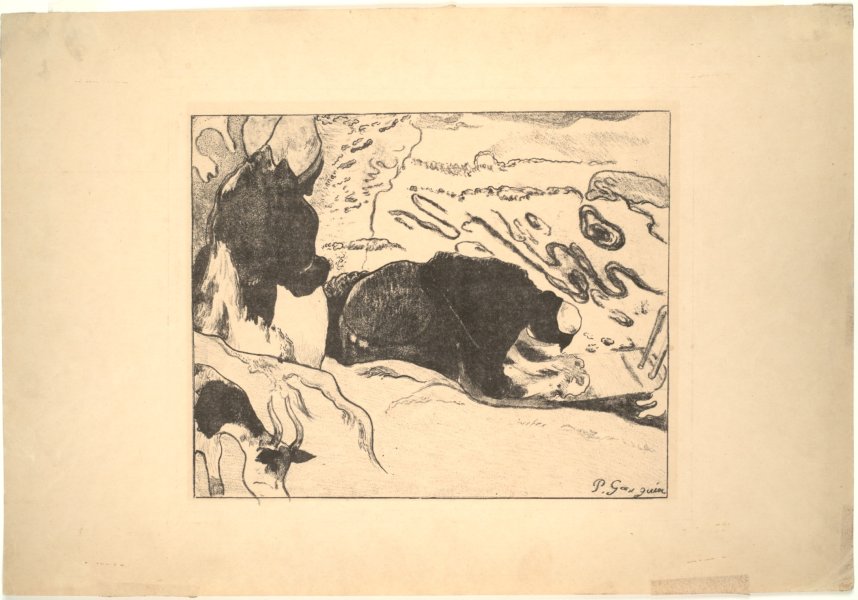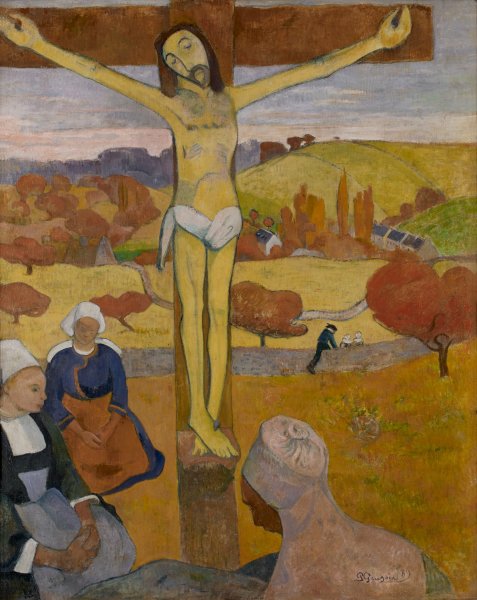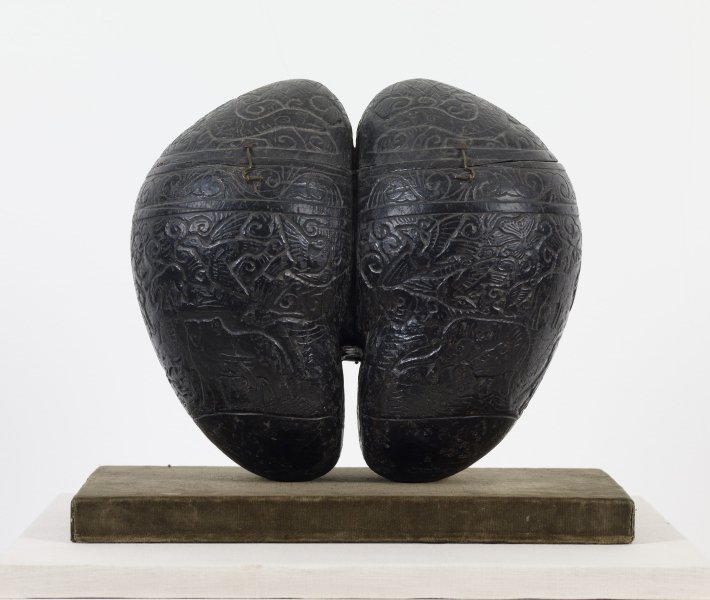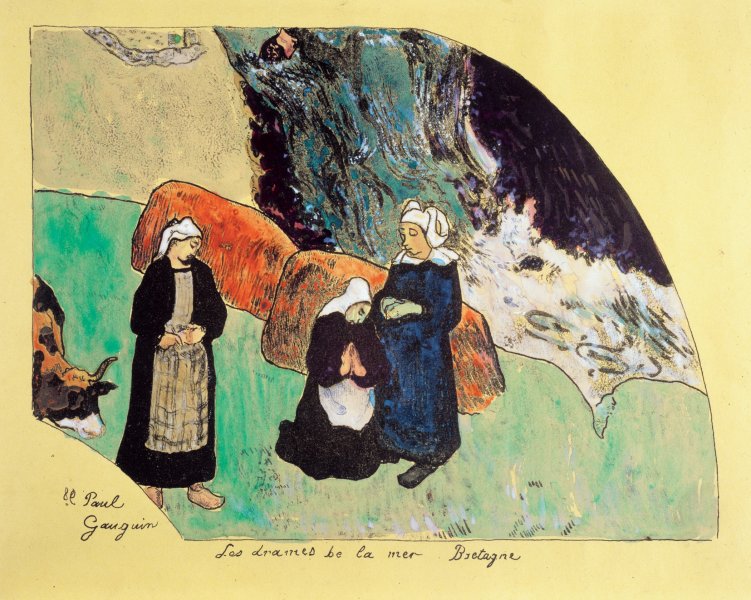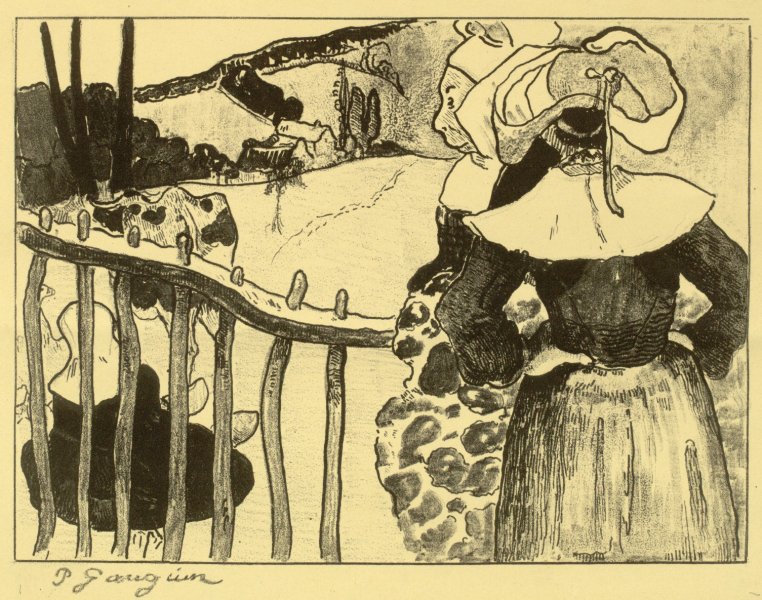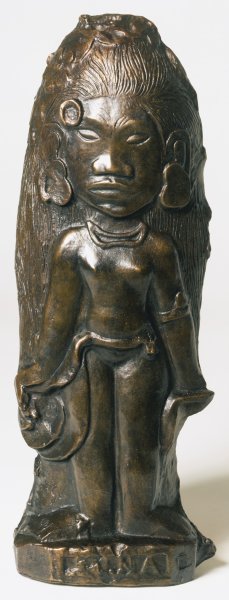Paul Gauguin
French, 1848-1903
Manaò tupapaú (Spirit of the Dead Watching), 1892
Artwork Details
Currently on View
Collection Highlight
Materials
oil on jute mounted on canvas
Measurements
support: 28 3/4 x 36 3/8 inches (73.02 x 92.39 cm); framed: 45 5/8 x 53 1/16 x 5 1/4 inches (115.89 x 134.78 x 13.33 cm)
Collection Buffalo AKG Art Museum
Credit
A. Conger Goodyear Collection, 1965
Accession ID
1965:1
In 1891, after many years without commercial success in France, Paul Gauguin traveled to the island of Tahiti, speculating that such exotic imagery would sell well in Paris. The central figure in this painting is a young Tahitian girl named Teha’amana who lies on her stomach, glancing sideways at us. In this work, Gauguin said he was trying to represent the Polynesian fear of the tupapaú, or spirit of the dead, who appears here as an older woman in a black cloak. On the wall behind the bed are several feathery white forms, which the artist described as phosphorescent lights that exemplified the interest the spirits take in the living.
From this description, one might ascertain that the girl, who, according to Gauguin, was just thirteen years old at the time, is afraid of the specter. The artist later described their relationship as representing a series of dualities, including “youth and old age, light and darkness, and life and death.” Alternatively, could her apprehension be provoked by what she sees beyond the picture plane? During his time in Tahiti, Gauguin assumed the role not only of an artist framing and executing compositions, often projecting his own primitivist preconceptions in doing so, but also of a much older man who was in a position to take advantage of his subject. The work’s mysteriousness creates space for a great deal of open-ended discussion around its content as well as the artist’s intent.
Label from Humble and Human: An Exhibition in Honor of Ralph C. Wilson, Jr., February 2–May 26, 2019
